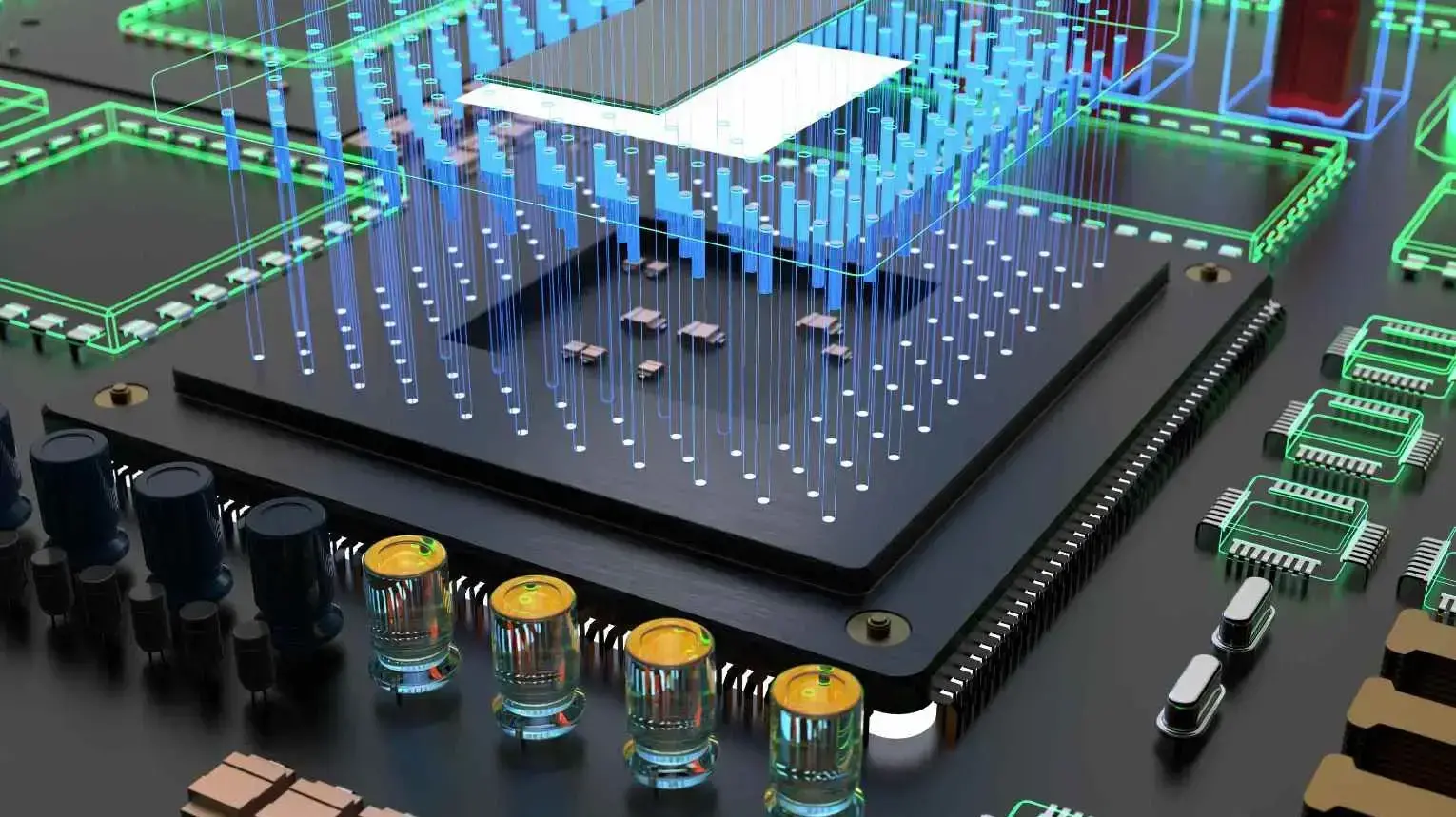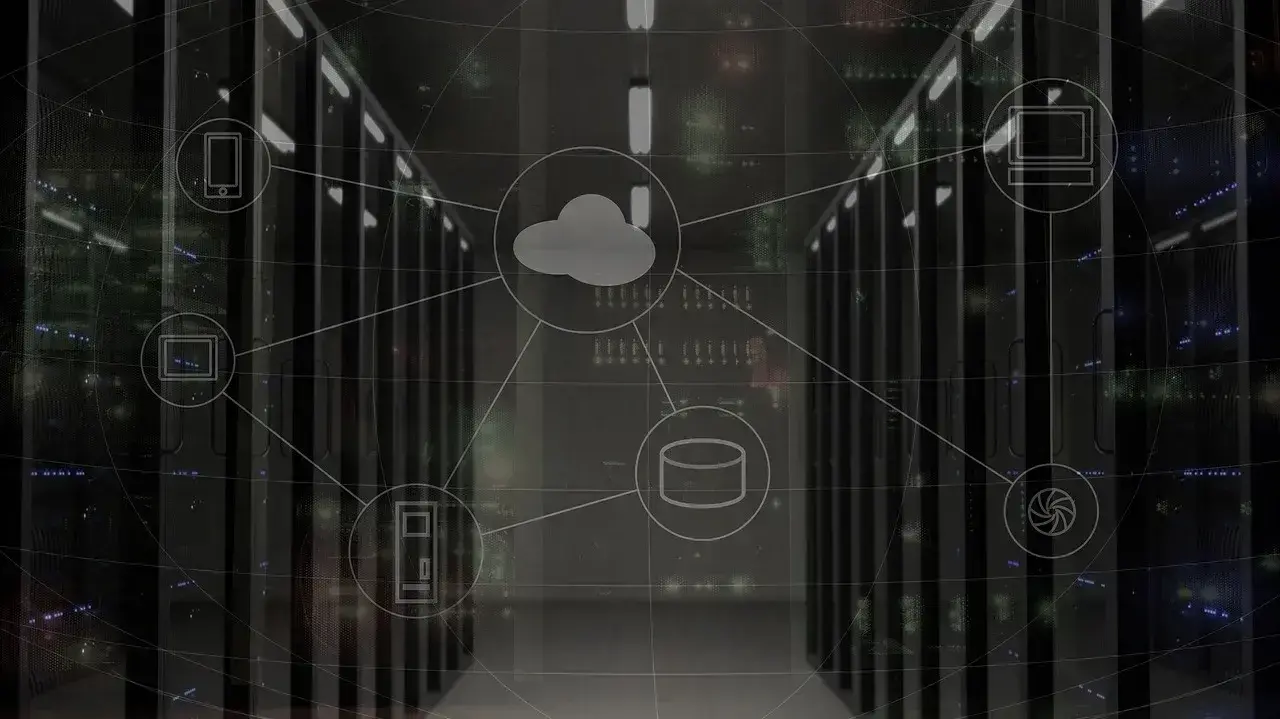Ready to boost your hosting speed? NVMe (Non-Volatile Memory Express) servers, with their advanced solid-state drives (SSDs), dramatically outperform traditional HDDs and SATA-based SSDs.
These servers deliver rapid data transfers, lower latency, and enhanced overall performance, making them ideal for demanding applications like databases and big data analytics.
For resellers, integrating NVMe technology, such as Verpex Hosting's offerings, not only improves service quality but also enhances customer satisfaction and strengthens market competitiveness.
NVMe vs. Traditional Storage Solutions
There are several key differences between NVMe and traditional storage solutions such as hard disk drives (HDDs) and Serial ATA (SATA)-based solid-state drives (SSDs). Here are some of the main differences:
NVMe
NVMe uses a high-speed interface protocol that is designed to take advantage of the parallelism and low latency of modern solid-state storage.
NVMe SSDs have significantly faster read/write speeds.
NVMe SSDs have lower latency which means they can access data more quickly.
NVMe supports a much larger queue depth( depths of up to 64,000, compared to around 32 for SATA-based SSDs.) which means it can handle more I/O requests simultaneously.
NVMe can support more SSDs per controller and can connect to more controllers per server than SATA-based
Traditional Storage Solutions
Traditional storage technologies use slower, more complex protocols that were originally designed for spinning disks.
Traditional storage technologies are slow in speed compared to NVMe.
Traditional storage technologies have higher latency which makes it difficult to access data quickly.
Traditional storage technologies support a smaller queue depth which means they cannot handle I/O simultaneously.
Traditional storage technologies cannot support more SSDs per controller
NVMe is designed to scale more efficiently than traditional storage technologies.
NVMe provides a significant performance boost over traditional storage technologies, which makes it ideal for data-intensive applications that require high I/O performance and low latency. However, NVMe is also typically more expensive than traditional storage technologies, so it may not be cost-effective for all use cases.
NVMe Types

The different types of NVMe offer different levels of performance, capacity, and form factors, which makes them suitable for different use cases. Here are some of the main types of NVMe:
- U.2 Form Factor
This is a 2.5-inch drive that connects to the host computer using a U.2 connector. U.2 SSDs can support capacities of up to 16TB and are often used in enterprise storage systems.
- M.2 Form Factor
This is a small, rectangular SSD that connects directly to the motherboard using an M.2 slot. M.2 SSDs can support capacities of up to 4TB and are often used in laptops and desktops.
- AIC Form Factor
This is a PCIe card that plugs into a PCIe slot on the motherboard. AIC NVMe SSDs can support capacities of up to 30TB and are often used in high-performance servers and workstations.
- NVMe U.2
NVMe U.2 drives are a 2.5-inch form factor that uses the U.2 connector to connect to the host computer. U.2 drives typically have higher capacity than other NVMe form factors, with drives available in capacities up to 32TB. U.2 drives are often used in enterprise storage systems and servers that require high capacity and durability. One of the benefits of U.2 drives is that they can be replaced without powering down the system.
- NVMe M.2
NVMe M.2 is a small form factor for NVMe SSDs that connects directly to the motherboard using an M.2 slot. M.2 SSDs are available in different lengths and widths, with capacities of up to 4TB. One of the benefits of M.2 drives is that they can be faster than SATA SSDs and use less power, making them ideal for portable devices(laptops and desktops).
- NVMe PCIe
NVMe PCIe is a type of NVMe that connects to the host computer using a PCIe slot. NVMe PCIe can come in different form factors, such as the Add-In Card (AIC) form factor or the U.3 form factor. NVMe PCIe drives can have very high capacity and performance, with drives available in capacities up to 100TB and read/write speeds up to 28 GB/s. One of the benefits of NVMe PCIe drives is that they can take advantage of the high-speed PCIe interface, resulting in faster data transfer rates compared to other storage interfaces.
NVMe U.2 drives are ideal for enterprise storage systems that require high capacity and durability, NVMe M.2 drives are ideal for laptops and desktops that require fast data access and low power consumption, and NVMe PCIe drives are ideal for high-performance servers and workstations that require high capacity and fast data access.
Cost of NVMe servers
The cost of NVMe servers can vary widely depending on a number of factors, including the type and capacity of the NVMe drives, the configuration of the server, and the vendor or manufacturer.
NVMe U.2 drives, which are designed for use in enterprise storage systems and servers, can cost several hundred to several thousand dollars per drive depending on the capacity and performance characteristics. For example, a 2.5-inch NVMe U.2 drive with a capacity of 1TB may cost around $500, while a higher-end drive with a capacity of 8TB or more could cost several thousand dollars.
Factors that influence the cost of NVMe servers:
There are several factors that influence the cost of NVMe servers:
- Type of NVMe drives
- Capacity of NVMe drives
- Number of NVMe drives
- Processor
- Memory
- Storage
- Brand and vendor
- Configuration
NVMe vs. M.2 NVMe: what’s the difference?
NVMe and M.2 NVMe are related, but they refer to different things.
NVMe (Non-Volatile Memory Express) is a storage interface protocol that is designed specifically for solid-state drives (SSDs) to improve their performance by reducing latency and increasing data transfer rates. NVMe drives connect to a computer's PCIe bus and offer faster read and write speeds compared to traditional SATA drives.
M.2 NVMe, on the other hand, refers to the physical form factor of an NVMe SSD. M.2 is a small form factor specification for solid-state drives that are designed to be used in laptops, desktops, and other small devices. M.2 NVMe drives are connected to the computer's PCIe bus and offer faster performance compared to traditional SATA-based M.2 drives.
NVMe refers to the storage interface protocol, while M.2 NVMe refers to the physical form factor of the drive. NVMe drives can come in different physical form factors, including M.2, U.2, and PCIe, among others. M.2 NVMe drives are just one example of an NVMe drive that uses the M.2 form factor.
Benefits of NVMe drives

1. Faster Performance
NVMe drives offer much faster read and write speeds than traditional SATA-based drives, which not only results in quicker boot times, application loading times, and file transfer speeds but also allows resellers to provide exceptionally rapid website performance. This speed is crucial for maintaining a competitive edge and improving client retention rates in reseller hosting.
2. Lower Latency
With significantly lower latency, NVMe drives enhance the responsiveness of hosting services, making them ideal for real-time applications like online gaming or financial transactions. This quick data access is a key factor in boosting customer satisfaction for resellers, as clients experience minimal delays and high reliability.
3. Increased Efficiency
NVMe drives use less power and generate less heat, leading to increased system efficiency. This benefit helps resellers reduce operational costs and appeal to eco-conscious customers, making their hosting services not only more sustainable but also more cost-effective.
4. Smaller Form Factor
The compact size of M.2 NVMe drives allows for denser server configurations, enabling resellers to maximize server space. This can lead to hosting more clients per server, which increases profitability and reduces costs in data center environments without sacrificing performance.
5. Higher Capacity
Supporting higher storage capacities, NVMe drives enable resellers to meet the needs of clients requiring large amounts of data storage, such as media companies or data-intensive applications. This capability helps resellers enhance their service offerings and attract a broader range of clients.
Why NVMe for Reseller Hosting?
Choosing the right hosting provider is crucial, and Verpex Hosting offers robust reseller plans that integrate NVMe technology. By opting for NVMe-enhanced reseller hosting from Verpex, resellers can not only boost their service quality but also provide their clients with lightning-fast website performance.
Speed: NVMe drives deliver rapid read/write speeds, drastically reducing page load times for all websites hosted on the server. This is especially critical for resellers who manage multiple, data-intensive websites.
Scalability: With capabilities to handle more data requests at once and support for larger queue depths, NVMe technology ensures that reseller servers can scale with customer growth without a hitch.
Reliability: The architecture of NVMe reduces data corruption risks and increases the overall stability of the storage subsystem, translating into higher uptime for hosted websites - a major selling point for any reseller.
Key Features of M.2 NVMe
(and why it is becoming increasingly popular)
M.2 NVMe is a small form factor specification for solid-state drives (SSDs) that is designed to be used in laptops, desktops, and other small devices. Here are some of the key features of M.2 NVMe and why it is becoming increasingly popular:
Small form factor
M.2 NVMe drives are very small, typically measuring just 22mm x 80mm, making them ideal for use in smaller devices like laptops and mini-PCs. The small form factor also allows for more flexibility in system design, as it frees up space for other components.
High performance
M.2 NVMe drives use the NVMe interface protocol, which offers faster data transfer speeds and lower latency compared to traditional SATA-based drives. This makes them ideal for high-performance computing systems and gaming PCs.
Increased efficiency
M.2 NVMe drives use less power and generate less heat than traditional drives, which can improve the efficiency of your system.
Multiple connectivity options
M.2 NVMe drives can be connected to a computer's PCIe bus, which allows for faster data transfer speeds, or to a computer's SATA interface, which is slower but more widely compatible.
Higher capacity
M.2 NVMe drives can support higher capacities than traditional drives, which means that you can store more data on a single drive.
Easy installation
M.2 NVMe drives are easy to install, as they simply slot into the M.2 socket on your motherboard. This makes it easy to upgrade your storage without having to open up your computer case.
M.2 NVMe drives offer a combination of a small form factor, high performance, increased efficiency, multiple connectivity options, higher capacity, and easy installation that make them ideal for a wide range of applications. As a result, M.2 NVMe is becoming increasingly popular, especially in laptops and small form factor desktops, where space is at a premium.
NVMe servers improve the performance of multi-tenant infrastructures by providing faster access to data in cloud computing environments. NVMe servers are a powerful tool for organisations seeking to improve their application performance and user experience
Conclusion
Adopting NVMe technology is essential for staying competitive in the fast-evolving hosting industry. With unmatched speed, reliability, and scalability, NVMe servers provide faster website load times, improved user experiences, and the capacity to handle growing demands.
Whether you are a reseller or a business seeking top-tier hosting solutions, upgrading to NVMe ensures you are leveraging the best available technology. Now is the time to embrace the future of hosting; sign up for Verpex’s NVMe-powered plans and take your hosting performance to the next level.
Frequently Asked Questions
What is the price of an NVMe server?
The price of an NVMe server depends on a variety of factors, including the specific configuration, the number and type of NVMe drives, and the vendor or manufacturer. The cost of an NVMe server can range from a few thousand dollars for a basic configuration to tens of thousands of dollars or more for a high-end, fully configured server with multiple NVMe drives.
Can I upgrade my existing server to use NVMe drives?
You cannot upgrade an existing server to use NVMe drives without significant hardware changes. NVMe drives require specific hardware interfaces and may require different power requirements compared to traditional storage systems. It is recommended to consult with your hardware vendor or system integrator to determine if upgrading to NVMe is possible for your existing server.
Can NVMe drives be used in a computer that only has SATA ports?
NVMe drives require an NVMe-compatible port, which is typically a PCIe slot on the motherboard. If your computer does not have an NVMe-compatible port, you will not be able to use an NVMe drive. However, there are adapters available that allow you to connect an NVMe drive to a computer that only has SATA ports, although this will result in slower performance
What should I consider when selecting an NVMe server?
You should consider factors such as processor speed, memory capacity, network connectivity, storage capacity, expansion options and the specific needs of your applications and workload.

Yetunde Salami is a seasoned technical writer with expertise in the hosting industry. With 8 years of experience in the field, she has a deep understanding of complex technical concepts and the ability to communicate them clearly and concisely to a wide range of audiences. At Verpex Hosting, she is responsible for writing blog posts, knowledgebase articles, and other resources that help customers understand and use the company's products and services. When she is not writing, Yetunde is an avid reader of romance novels and enjoys fine dining.
View all posts by Yetunde Salami




















